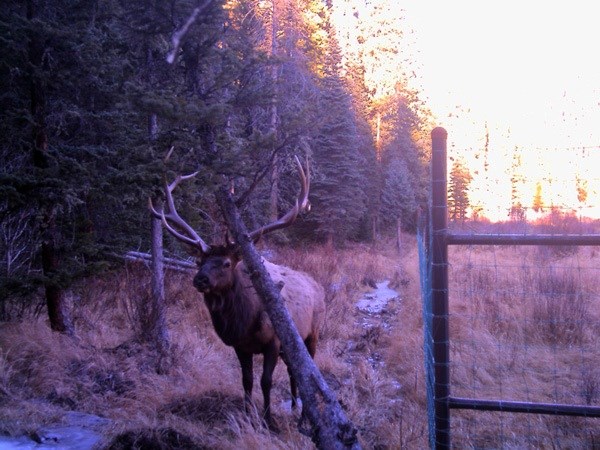Last updated: November 8, 2022
Article
Elk and Moose Exclusion Fence

The Question: Can fences be designed that will exclude elk and moose from willow rehabilitation areas but allow passage of smaller mammals?
Over-browsing by large ungulates and the Lawn Lake flood degraded areas that historically supported abundant willow populations. This has led to a variety of ecological impacts. Fencing is one means to protect these areas and allow them to naturally revegetate. Complete exclusion of all except the smallest mammals is possible using woven wire fence. The park wanted a fence that would exclude ungulates such as elk and moose while allowing passage of smaller mammals, such as coyotes, deer, cougars, foxes, and badgers. This provides a degree of “naturalness” in the ecosystem while limiting browsing on species such as aspen and willow.The Project: Evaluate a new fence design that would exclude elk and moose, but allow passage of deer and smaller mammals.
Edward Gage and David Cooper of Colorado State University evaluated an exclusion fence around Fan Lake to see if it would selectively exclude elk and moose but allow passage of smaller mammals. The upper edge of the woven wire mesh study fence was 76 inches high, but the lower edge was raised 16 inches above the ground surface. The theory was that adult elk and moose would not jump over the top, nor would they be able to crawl under the lower edge. Conversely, deer and other small mammals would be able to pass under the lower edge. They evaluated passage in two ways. They established animal track plots (2 meters x 3 meters) at eight locations inside and outside of the fence. They swept these plots clean and periodically observed the tracks to determine species passage. They also set up two digital scouting (or motion) cameras oriented along the fence line to document animals inside and outside of the fence.The Results: The design of the fence was a success.
Elk tracks were abundant outside the fence and only a single occurrence of an elk inside the fence was documented over the evaluation period. The researchers postulated that this individual may have used a snow bank to help jump the fence. They found no evidence of moose entering the exclosure. With few exceptions, the fence design was effective in its main function of excluding elk and moose, but both the track analyses and the cameras showed that the smaller mammals readily passed under the fence. After this project ended as part of the Elk and Vegetation Management Plan, the park built similar fences to protect selected areas of aspen and willow from browsing. Hopefully, these species will quickly show signs of recovery.This summary is based on published, peer-reviewed and/or unpublished reports available at the time of writing. It is not intended as a statement of park policy or as a definitive account of research results. For more information on the park’s research program, see www.nps.gov/romo
Written by: Bert Cushing Date: 09/20/10 Photo credit: Edward Gage and David Cooper
